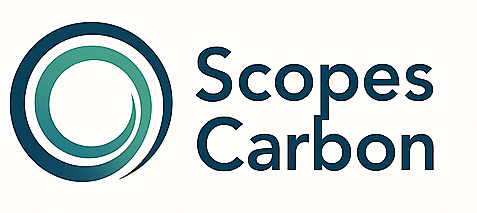Understanding Scope 1, 2 and 3 Emissions
Understanding Scope 1, 2 and 3 Emissions: What They Are and Why They Matter
 In today’s world, businesses are under growing pressure to measure and reduce their carbon footprints. But not all emissions are created equal—or counted the same way. That’s where the terms Scope 1, Scope 2, and Scope 3 come in. These categories help organisations understand the full picture of their climate impact, from the energy they use to the emissions created across their supply chains.
In today’s world, businesses are under growing pressure to measure and reduce their carbon footprints. But not all emissions are created equal—or counted the same way. That’s where the terms Scope 1, Scope 2, and Scope 3 come in. These categories help organisations understand the full picture of their climate impact, from the energy they use to the emissions created across their supply chains.
Here’s a breakdown of what each scope means and why they matter.
Scope 1: Direct Emissions
Scope 1 covers direct emissions from sources a company owns or controls. These are the emissions released as a direct result of the company’s activities.
Examples include:
- Fuel burned in company-owned vehicles (e.g. delivery vans, trucks)
- On-site combustion such as gas boilers or generators
- Industrial processes that emit greenhouse gases
These emissions are often the easiest to measure and control because they are within the company’s direct operations. Reducing Scope 1 emissions might involve switching to electric vehicles or using cleaner fuels.
Scope 2: Indirect Energy Emissions
Scope 2 includes indirect emissions from the generation of purchased electricity, heating, and cooling. Although the company isn’t producing these emissions itself, it’s still responsible for them through its energy consumption.
For example:
- Electricity used to light, heat or cool offices and factories
- Purchased steam or chilled water from an external supplier
To reduce Scope 2 emissions, companies can improve energy efficiency or switch to renewable electricity sources.
Scope 3: All Other Indirect Emissions
Scope 3 emissions are often the largest and most complex. They cover all other indirect emissions that occur in a company’s value chain, both upstream (from suppliers) and downstream (from customers).
Examples include:
- Emissions from business travel and commuting
- Emissions from the production of goods a company buys
- Use and disposal of products by customers
- Waste generated by the company
- Transportation and distribution not owned by the company
Scope 3 can be the hardest to tackle, because it involves a wide range of activities and partners outside your direct control. But it’s also where the biggest gains can be made. That’s where Scopes Carbon can help—we specialise carbon balancing emissions, in high-impact areas like business travel and supply chain logistics.
Why These Scopes Matter
Understanding the three scopes helps businesses:
- Measure their total emissions more accurately
- Identify hotspots where emissions are highest
- Set meaningful targets for net zero or carbon reduction
- Communicate transparently with stakeholders, investors, and customers
Many sustainability standards, such as the Greenhouse Gas Protocol and Science Based Targets initiative (SBTi), use these scopes to guide reporting and action planning.
Thank you for reading this month blog, Understanding Scope 1, 2 and 3 Emissions. Please get in touch to see how you can carbon balance your event.
Scopes Carbon
